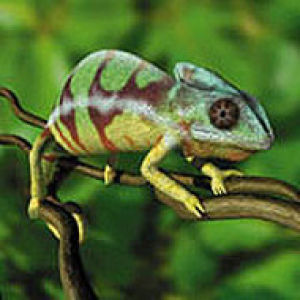Ring-Necked Parakeet (in South-West London)
Psittacula krameri
Look in large ("L") to see the characteristic ring around its neck. I find these tricky to photograph because they're either flying very fast and quite high up, or they perch at the top of trees; I hear them much more often than I see or photograph them...
These are Britain's only naturalised species of parrot! They certainly do look and sound out of place... This is a photograph of a parrot that I took on Clapham Common (that just sounds so wrong: see what I mean?).
My first encounter with these was a few years ago when two swooped into the tree at the bottom of our garden: they move in a very unfamiliar and eye-catching way, gliding and swooping in large, fast curves, or flying very fast and very directly. The two of them perched in our tree like emerald cage birds, and my mother and I assumed that they'd escaped from someone's aviary so looked them up online: we were both shocked to discover that these were London's 15th most commonly sighted bird in 2005! They were London's 13th most commonly sighted bird in last years RSPB Big Garden Birdwatch... It is thought that if their population grows considerably more then they may start to threaten woodpeckers which occupy a similar ecological niche; as yet, it is thought that they've had less of an impact that one might suspect...
I think that they are very beautiful, but they make a very distinctive, loud, and unpleasant screeching noise (think of a stereotypical rainforest scene in a film, and the screeching noise that the birds make there...). They have become naturalised since they started breeding in the wild in the late 1960s; it is not actually known how they were first released into the wild in the UK, but they are hardy (being from the foothills of the Himalayas particularly in India) so were popular as ornamental cage birds, so presumably an escape or two was involved...

Comments
Sign in or get an account to comment.


